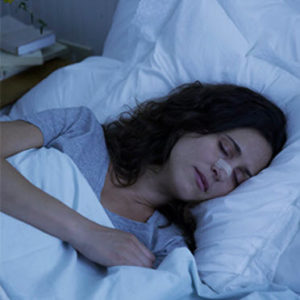Consume drinks such as beer, cider, lager, and wine, and you are drinking alcohol. It is also found in spirits such as gin, rum, vodka, etc. Every alcoholic beverage contains pure alcohol (ethanol). Drinks have different strengths, colours, and tastes that depend on the amount of ethanol and other ingredients (hops, grapes, grains, etc.) being used. There are a lot of calories in alcohol, as well as zero nutritional value.
What Is a Unit of Alcohol?
Different alcoholic beverages have different strengths, and each is measured by a % by volume. Stronger drinks come with a higher alcohol %. Alco pops may sometimes be stronger than beer, lager, or cider.
A single unit is equal to 8gms or 10ml of pure alcohol. If you want to know exactly how many units you are drinking, you can do so by multiplying the volume of the drink in ml by the %A.B.V and dividing it by 1000.
The maths would look like this: a 330ml can of beer with a 6% A.B.V. would be 330×6 divided by 1000, which would equal 1.98 units.
Each of the following drink measures comes with a single unit of pure alcohol:
- A ½ pint of regular strength beer/lager/cider (3.5-4% A.B.V.)
- A pub measure (25ml) of spirit (40% A.B.V.)
- A glass of wine (small 8-9% A.B.V.)
A few more examples of drink units:
- 11-12% A.B.V. glass of wine (125ml) = approx. 1.5 units
- 4-5% A.B.V. bottle of beer/lager/cider = approx. 1.5 units
- 4% or 6% A.B.V. bottle of alco pop = approx. 1.3 and 2 units, respectively
- A single pint of standard lager or beer = 2 units
- A single pint of regular cider = 2.8 units
It’s worth remembering that the drinks served at home parties are generally a whole lot more generous than what you would get at your local pub.
When Do You Know You’ve Had Enough?
There are daily alcohol limits in place that allow you to drink safely, and without putting your health at risk. These do not apply to minors who have yet to reach the legal drinking age. The benchmarks outlined below are for a single 24 hour period of alcohol drinking.
Generally speaking, women cannot handle as much alcohol as men. There is less water in their bodies, and their weight and metabolism also plays a role.
Guide for women: –
Staying within the 2-3 units per day range should pose no health risks. If you move that consumption up to 3-4 units per day, you are starting to run the risk of damage to your health.
Women who are considering pregnancy should limit their consumption to 1-2 units a couple of times per week. Pregnant women should avoid alcohol altogether, as consumption can harm the development of the child in the womb.
Guide for men: –
The safe benchmark comes in at about 3-4 units per day. Regularly drinking more than 4 units per day can put your health at risk.
Does Alcohol Deliver Any Health Benefits?
Men over the age of 40 and women who have been through menopause can get some health benefits from 1-2 units of alcohol per day. Alcohol has been proven to offer a level of protection against coronary heart disease and certain types of stroke. The amount of cholesterol on the bloodstream is influenced by alcohol, which can help prevent clots.
What Effects Come from Drinking Alcohol?
Drinking alcohol in small amounts can help you feel more relaxed and sociable. The effects really depend on a number of factors, such as the strength and rate at which the alcohol is consumed, the last time food was consumed, the weight of the individual, and more. It only takes about 5 minutes after consumption for alcohol to affect the mind.
The more alcohol is consumed, the more likely it is the person will become drunk. This may lead to slurred speech, poor coordination, and a heightening of emotions. Inhibitions tend to be dropped when intoxicated, which means sexual situations can arise that normally wouldn’t. Failing to use protection of any kind during these encounters can result in unwanted pregnancy and sexually transmitted diseases.
The day after being drunk can be bad, especially if a hangover develops. You may feel nauseous, tired, depressed, and have a headache for as long as a day or two. If you feel any of these symptoms after drinking alcohol, it is recommended that you allow your body 48 hours to recover.
Alcohol poisoning can occur when you drink way too much. A loss of consciousness is likely, as is the risk of choking on your own vomit.
Continued alcohol abuse can lead to serious damage to the organs of the body, particularly the stomach, heart, and liver. In the U.K alone, there are over 25,000 alcohol related deaths each year.
The Effects of Alcohol on Mental Health
While many people drink alcohol to relax and socialize, excessive consumption can take a serious toll on mental well-being. Alcohol is a depressant that alters brain chemistry, potentially worsening symptoms of anxiety, depression, and other mental health issues. Drinking to cope with stress or emotional pain may provide temporary relief but ultimately fuels a vicious cycle.
Mixing alcohol and drugs, legal or otherwise, is incredibly dangerous.
What Is Current Legal Drink Drive Limit?
The alcohol limit for drivers in England and Wales is 80 milligrams of alcohol for every 100 millilitres of blood, 35 micrograms per 100 millilitres of breath, or 107 milligrams per 100 millilitres of urine. This is generally higher than other European countries.
The limit for drivers in Scotland recently decreased. As of December 5th, 2014 the limit went from 100 millilitres of blood to 50 milligrams of alcohol in every 100 millilitres of blood. The current level is 22 micrograms per 100 millilitres of breath from 35 micrograms of alcohol per 100 millilitres of breath.
Read our article on Drink Driving Limits in the UK.
There is no safe way to convert the legal drive limit into units, simply because the absorption rate of alcohol in the bloodstream differs from person to person. On average, though, men weighing 12-13 stone should not consume any more than 4 units, while women weighing 9-10 stone should consume no more than 3 units. If you are smaller than those weights, or have not eaten, the number of units will be less that stated.
The only way to assure that you are under the limit is to not drink if you plan on driving. Even a small amount of alcohol can affect your ability to properly judge speed and distance. Your reaction time may also be affected. Close to 800 people annually in the U.K. die as a result of road accidents involving drivers who are over the legal limit.
How Long Does It Take to Get Alcohol out of Your System?
Assuming you have a healthy liver, you can expect it to take about an hour for your liver to remove 1 unit of alcohol. What that means is that you might still be over the legal limit the morning after a heavy night of drinking. All of the old techniques to remove alcohol, such as a cold shower, black coffee, etc., will do nothing to help with the removal.
Children and Alcohol
Young people see alcohol everywhere – in pubs, supermarkets, pubs, restaurants and on the television. They can also witness their parents drinking alcohol and this can make it hard for them to realise that misusing alcohol can be dangerous. Many children sample their first alcoholic drink somewhere between the ages of 10 and 13. Often it will be at a family gathering such as a wedding. Young people may also go off and experiment with drinking alcohol amongst friends. Because they are smaller than adults, they will be affected by alcohol much more quickly. As a consequence, young people are more likely to have an accident or get involved in a fight after drinking alcohol.
Helping a Friend with an Alcohol Problem
If you’re concerned that a friend is struggling with alcohol abuse, reaching out with compassion can make a difference. Choose a time when they are sober to express your concerns, using “I” statements to avoid sounding accusatory. Offer to assist them in finding professional help, whether it’s counseling, support groups, or addiction treatment programs. Remember, recovery is a process – your ongoing support and understanding can be invaluable.
How Do You Handle an Emergency Situation Where Someone Has Drunk Too Much?
The best thing you can do with someone who is extremely drunk is to make sure that they are not left alone. If they fall asleep with no supervision, they run the risk of choking on their own vomit. Try to keep them on their side, and regularly check their breathing. If they become unconscious, dial 999 immediately, put them in the recovery position (on their side), make sure they are warm, but not too hot. Monitor their breathing and stay with them until the ambulance arrives.
The Law and Alcohol
The law prohibits the sale of alcoholic beverages to individuals under 18 years old. Minors are also barred from attempting to purchase alcohol. The sole exception applies to 16- and 17-year-olds partaking in a restaurant meal, where they may legally be served beer or cider, but not in a bar setting.
Law enforcement officers have the authority to confiscate alcohol from persons they know or believe to be below the legal drinking age of 18 if found consuming alcohol in public.
Photo by Anthony Cunningham for Zoom Health
Zoom Health is a leading UK supplier of Home Health Tests and Earplugs





